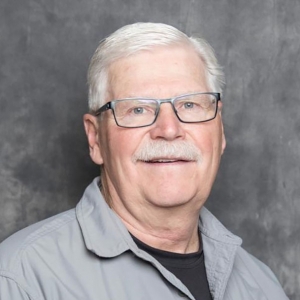Students Make A Difference


Contributed by
Paul H. Lehmann, MPH
NAD CABL Coordinator
Associate Professor/Chair Emeritus
Burman University
Collegiate Advocates for Better Living (CABL) was started by students for students at Southwestern Adventist University in 1972, under the name Collegiate Adventists for Better Living. Most Adventist college or university has had a CABL program at some point since then, and the original purpose of CABL continues today with added elements as specific needs change over time for each campus.
CABL Advocates are student leaders on the campus who work with their teams to promote health in a large variety of capacities. This could be in the areas of physical, mental, social, spiritual, emotional health or a combination of each of those important elements. At times this reaches beyond the campus to the community and surrounding area. Personal health goals generally improve as leaders and team members share and develop programs to promote health.
One of the benefits of CABL is that student advocates develop leadership skills. Although these talents may not be immediately recognized, the Advocate gains and develops these skills through serving. Among the skills they learn are programming, budgeting, promotion, and marketing. They also build relationships with their sponsor/faculty mentors and form collaborations with other student leaders on their campus. They are also provided opportunities to connect with CABL Advocates on other campuses through Zoom meetings and the yearly CABL/Campus Ministries Conference organized by the campus chaplains.
How CABL Works
Potential CABL leaders are firstly identified by their campus sponsors to take on the role. After submission of an application to the NAD, with the approval of their sponsor, they are accepted into the scholarship program once the NAD’s CABL Coordinator reviews the events that they plan for the school year. As mentioned, the Advocate must take leadership in planning a minimum of four events during the school year that address the mental/emotional, physical, social, and spiritual dimensions of health.
Reports are sent into the NAD CABL Coordinator each semester, providing an overview of the programs that were carried out, the cost, number of participants, the success of the event and what changes could help improve the event. The report serves as another learning opportunity for Advocates as they learn how to summarize events, assess results, and consider opportunities for future improvement.
Programs & Examples
What are some of the programs that CABL leads or collaborates with on the campuses? Student leaders and their team clearly have a pulse as to some of the needs on respective campuses and are tuned into critical needs that seem to span most campuses. The following are some of the programs and activities that have been led by very capable CABL Advocates:
- Addictions week that covers a variety of addictions that not only affect students but the population in general. These could include alcohol, drugs, pornography, gaming, and food.
- How to help with sleep deprivation.
- CABL Challenge Weekend in which a special speaker is invited to speak on health and related topics.
- Track Attack is used to get students outside, walking, running, socializing at an organized event on the campus running track.
- “CABL cook off” in which CABL organizes students to compete in fall cooking demonstration and competition. Food is donated from the extra garden produce from the community have, and individuals are invited to come and judge the competition. Categories include taste, presentation time and ease to prepare. Extra food that was donated was then given to the students to take with them.
- Mental health awareness and support has become a very important part of CABL on campuses as the challenges of COVID deepened and lingered. In conjunction with mental health professionals on the campus and the community, CABL was a strong supporter to improve mental health.
- Personal social interactions were encouraged on some campuses with special programs and events that CABL teams organized and collaborated with other campus programs. Meeting places where students could interact face to face and write notes to others, without cell phones.
- Art programs and pet days were organized as a positive outlet of expression and learning, as stress increases on campuses. Art supplies and avid artists who could teach some of the basics were a part of the Art Day. Pets were brought in to specified areas to be part of the Pet Day.
- CABL leaders were encouraged to share the “Anxiety, Depression, and Burnout” assessments with peers and to assess themselves. These specific tools create an awareness of personal mental health and an assessment of scores help participants who need help to seek professional help.
- Hikes and nature activities were planned to encourage exercise, social interaction, fresh air, and sunlight. One campus planned an ice-skating event, and another has done ice curling.
- The Made to Move Challenge is a 5K that has become more popular as CABL leaders orgaize the September event for students and the local campus church. Made to Move Challenge is an initiative from the NAD Health Ministries Department for all ages at churches, schools, and other organizations to promote better health through movement in an outdoor environment. Movement! We Were Made for This.
- Karaoke nights where local student talent is shared in a worship event on respective campuses.
- After glow and snacks connected with vespers or events such as Harvey’s harvest where there is time for getting off campus, eating, worship, and fun has been a positive event at some campuses.
- CABL also presented and carried out assessments on depression, anxiety, stress, and burnout at several annual CABL/Campus Ministries conferences. These assessments were then followed up with presentations and experiential activities on how to improve mental health and how to seek professional help, along with receiving their personal results.
The above are just a few of the events that CABL has done. The full list could include many dozens of events. The COVID-19 pandemic changed how we all live our lives to a certain degree, including increased accessibility to connecting virtually. As CABL leaders adapted to the challenges of COVID on individual campuses it also gave us opportunity to have meetings with leaders and sponsors virtually several times of year. This connection time gave rise to enhanced connections with leaders from each school and in real time find out about the challenges not only of CABL but of each institution. It opened the door to more and different communication. There needed to be creativity in problem solving as well as to realize that each student and campus was not alone in their challenges. CABL leaders came up with incredible resolve and innovation to encourage students on the campuses. That in a time when some students entered university learning only online and then ended up graduating in person with fellow students who they hardly knew. Numerous articles are available regarding the research on the negative mental effects related to the pandemic. Not the least of these is mental health on young people including young adults. CABL can and is part of the ongoing healing process for these ever-present challenges.

How Can You Support Our Young Leaders?
The energy of the young adults on each of our SDA campuses is inspiring and needs to be “harnessed’ in a positive way. CABL generates action for this to be accomplished.
Time for students is a valuable commodity that needs to be used wisely. They need the support of mentors, faculty, church members, and peers. The challenges of classes, studying, research, relationships, leading in a variety of important programs is all a part of a student’s life. As this age group is so often unreached or less influenced in an encouraging manner for reasons listed above it becomes even more critical that they have proper mentorship and are personally encouraged to live healthy, balanced, and spiritual lives. CABL can and should be part of that in a very meaningful way.
Could the church membership in some way be more connected and engaged with this group? Perhaps one of the reasons young adults are at times overlooked is that they are semi transient in the churches of university cities for a few short years and there is no real comfort level in connecting with them. The positive influence that they share with their peers about health and spiritual connection is unfathomable and being part of CABL has changed the lives of many young people. The local churches that have this age group of students in their community has treasure that needs to be shared and developed.
The NAD Health Ministries department and CABL have now started to collaborate with the NAD Youth/Young Adult department to expand the outreach of health and wellness to public campuses through Adventist Christian Fellowship (ACF). There are several public universities in Canada and the United States that have chapters of ACF with very dedicated Seventh-day Adventists students who serve as presidents of their local chapters.
The local Seventh-day Adventist churches near those public campuses are encouraged to play an important role to inspire and pray for the young adults. There is very large contingency of Seventh-day Adventist students, staff and faculty on the public campuses who can make a huge impact to a very large “untouched” population of secular young adults. The local church members can support that ACF group in extremely positive ways as they support the public campus ministries. Health is one very meaningful and unthreatening way to reach out to the population of the “secular” students on the public and private campuses. The local churches are a key element to make that happen.
Leadership Development
As the CABL needs are confronted in the future on both the public and private campuses there are ways that each of us can help these young adults achieve a more meaningful and healthier life. “Helping is a fundamental human activity, but it can also be a frustrating one.” Edgar H. Schein wrote in his book, Helping: How to offer, give, and receive help. If we can help in a truly meaningful way, we have fulfilled a need for someone else. This is a Biblical concept that Christ taught and CABL does this through health programming. Could we not also offer this for young adults that we encounter?
In working with and developing teams there are a few factors that play an important role. CABL not only needs to work as a team in their respective campus environment, but they also can improve performance as they connect with young adults and mentors from other campuses and their individual church group.
Part of the strategies to improve teams’ effectiveness is to consider that there are certain factors that help teams to flourish and be creative in their approaches. The basis for teams to be successful is to create trust. Other principles that help to build trust are necessary to make effective teams including though not limited to: Integrity, humility, generosity, thankfulness, sound judgement, and ability. This in part is gleaned from team building training developed by Paul H. Lehmann personal research and experience on team building, leadership and trust, and opportunity analysis spectrum as well as information on Sam Sikes workshop on trust building at an International Conference for Experiential Education.
Effective teams are likely more effective at good communication. Alex “Sandy” Pentland of Harvard University in The Harvard Business Review, “The New Science of Building Great Teams” explains a list of elements important in communication for effective teams. Sociometric data shows some of the necessary components in communication to help teams succeed. The data also reveal, at a higher level, that successful teams share several defining characteristics:
- Everyone on the team talks and listens in roughly equal measure, keeping contributions short and sweet.
- Members face one another, and their conversations and gestures are energetic.
- Members connect directly with one another—not just with the team leader.
- Members carry on back-channel or side conversations within the team.
- Members periodically break, go exploring outside the team, and bring information back.
Final Thoughts
This is but a small chapter in CABL with an ever growing and complexity of needs about health and wellness for all and especially for our youth and young adults in our individual circles of influence. Prayerfully, those circles of influence can not only be managed but enlarged. Being part of the young adult community and using their energy, courage, and guided ideas we can all make a difference to fulfill a real need. Please pray for us.


Leave A Comment